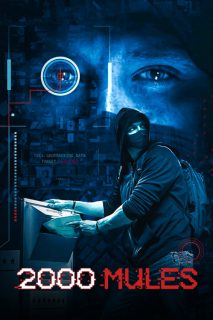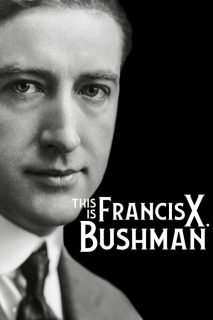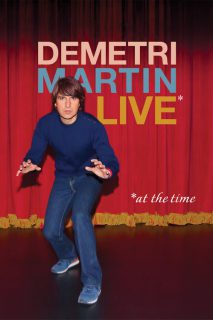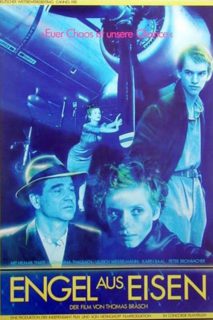
- Year: 2015
- Released: 23 Oct 2015
- Country: United States
- Adwords: Nominated for 1 Primetime Emmy. 3 wins & 6 nominations total
- IMDb: https://www.imdb.com/title/tt4316236/
- Rotten Tomatoes: https://www.rottentomatoes.com/m/the_black_panthers_vanguard_of_the_revolution
- Metacritics:
- Available in: 720p,
- Language: English
- MPA Rating: Not Rated
- Genre: Documentary, History
- Runtime: 115 min
- Writer: Stanley Nelson
- Director: Stanley Nelson
- Cast: Blair Anderson, Omar Barbour, Julian Bond
- Keywords: black panther party, 1960s,
 | 7.3/10 |
 | 79/100 |
 | 92% – Critics |
 | 71% – Audience |
The Black Panthers: Vanguard of the Revolution Photos



The Black Panthers: Vanguard of the Revolution Torrents Download
| 720p | bluray | 1.03 GB | magnet:?xt=urn:btih:0266A33804B6066BBEA2A0631DD763E85459A2FF |
The Black Panthers: Vanguard of the Revolution Subtitles Download
The Black Panthers: Vanguard of the Revolution Movie Reviews
A History Text but not an Analysis
*May contain spoilers, but not really* The first thing that struck me about this film was the absence of talk about revolutionary theory or even tactical practice. With a name like it has one might think it would unpack the nuanced and much debated term “vanguard” a little more. The influence of Mao Tse Tung thought is completely absent apart from a sign that says “Chairman Mao says: Free Huey,” which is never explained or even mentioned. Primarily the film tells the story of what happened, but does not explore motivations, expectations, hopes, dreams or rationale any more than is necessary for a cursory tally of events.
However, it is actually an entertaining film for precisely that reason. There are guns, there is action, there is insanity; or more properly put, allegations of insanity. Actually, the film is pretty sensationalistic. If you’re a radical interested in an analysis of the BPP this is not the place to look. I get the sense that the interviews in the film are brutally chopped up.
My favorite part of the film was also my favorite part of BPP history and that is Fred Hampton’s work in Chicago and his resulting assassination by agents of the state. The film actually does make a pretty good case for why Hoover’s FBI, the Nixon administration and the cops in Chicago considered him dangerous. However, one of the strongest arguments for his perceived danger from the state (and I do think it was justified) is the eloquence of his speeches and clips of these speeches are sadly lacking. One my favorite speeches is the one where he says: We’ve got to face the fact that some people say you fight fire best with fire, but we say you put fire out best with water. We say you don’t fight racism with racism. We’re gonna fight racism with solidarity. We say you don’t fight capitalism with no black capitalism; you fight capitalism with socialism.
We ain’t gonna fight no reactionary pigs who run up and down the street being reactionary; we’re gonna organize and dedicate ourselves to revolutionary political power and teach ourselves the specific needs of resisting the power structure, arm ourselves, and we’re gonna fight reactionary pigs with INTERNATIONAL PROLETARIAN REVOLUTION. That’s what it has to be. The people have to have the power: it belongs to the people.
In the film this speech was cut off after the first two sentences.
Additionally, the film focused solely on what was going on with the Panthers at the time and completely obfuscated the context of the time. It made mention of white allies but it did not talk at all about the Weather Underground, for example, who issued a “Declaration of War” against the US government in response to the assassination of Hampton and subsequently bombed multiple government buildings.
Like I said, this is an entertaining movie and some parts are even inspiring, but if you’re looking for the definitive story of the Black Panther Party, this is not the place.
From the inside
Greetings again from the darkness. Black lives matter. We hear the phrase frequently these days, and director Stanley Nelson (Freedom Summer) takes us back 49 years to the beginning of the Black Panther Party, and then walks us through the rise and fall. Rather than the usual textbook approach that focuses on the famous photos of angry black men wearing leather jackets and berets while toting firearms, this is a much more comprehensive look at the complexities of the organization and its members.
The familiar names of the Black Panther leaders include Huey Newton, Bobby Seale, Eldridge Cleaver, Kathleen Cleaver, Elaine Brown and Fred Hampton. Despite the fact that first hand interviews weren’t possible with the big three – Newton and Cleaver are no longer living, and Seale declined the opportunity, there are some fabulous video clips and photographs, many of which have been rarely seen.
It’s the interviews with former Black Panther members that provide the most insight. Their stance is that the original plan was a non-violent approach to bring attention to police brutality and the lack of equality in Black America. Many social programs were started to assist kids and the poor, but things turned more aggressive when the passive approach didn’t yield the desired results. Newton studied the laws and realized open carry was permitted on public property, and that’s where most of the famous photos originated.
The segment on J Edgar Hoover’s counterintelligence plan for the FBI to do what was necessary to prevent the expansion of the Black Panthers is one of the film’s best. Hoover even described them as “the greatest threat to the internal security of the country” (yes, this was during the Vietnam War). He was especially concerned about the rise of a “messiah”, and that led to what most consider the assassination of Illinois chapter leader Fred Hampton while he slept.
Oakland is widely accepted as the central hub of the Black Panthers, and it was surprising to learn that “most” members were teenagers and a majority were female. The interviews with the former members are fascinating and void of any pomp or bluster
just matter-of-fact recollections. What really stands out is just how media savvy the leaders were. They understood how to get headlines and bring attention to the issues.
We also learn that Jane Fonda hosted fundraisers and meetings, and we see a clip of Marlon Brando supporting the Black Panthers. These celebrities brought legitimacy to the organization, but didn’t stop the fracture that occurred when Huey Newton and Eldridge Cleaver began feuding over the best direction. Seeing clips of Bobby Seale running for Mayor of Oakland in 1972 certainly brought a contemporary feel, as the black voter registration drives continue to this day.
As one of the former members states “making history” was “not nice and clean”. We learn that more than 20 former Panthers are still in prison today, and the parallels between the mid-60’s and the movement for equality today are undeniable. Director Nelson offers an informative education without preaching or romanticizing the Black Panthers.
Great subject but the film maybe could have been stronger
This is the story of the revolutionary group, The Black Panthers. Formed in the late 60’s, they were an anti-capitalist, left wing militant group formed by disenfranchised black citizens originally in Oakland, California. Their formation was a result of the continued harassment and police brutality their people suffered in American cities at that time. It was a separate incarnation from the Civil Rights movement which had been specifically about redressing the actual lack of equal rights for black people in the American southern states. The Black Panthers were formed to stand up for blacks in the more ‘equal’ urban areas who were still put upon by the white authorities and who still suffered much racism. They famously had an image of openly bearing arms and their overall approach was of a more confrontational style than that preached by Martin Luther King. Just as important, their look became very chic, dressed all in black, wearing berets, leather jackets and shades, they also sported afro haircuts in an unashamed way for the first time in contemporary America. The idea was to visually show that black was beautiful in its natural form. The look certainly resonated with images of the group making the front covers of various magazines; it remains iconic to this day.
The film is made up by a combination of extensive archive footage from the time and current interviews with past members of the group. It tries to understand some of the motivations and ambitions of the group, while looking at some of their opponents such as the head of the FBI, J. Edgar Hoover who seemed quite obsessed with eradicating the group. In one telling clip he even states that he doesn’t consider the concept of justice as being all that important and that law and order was what he was all about. So it’s perhaps not so surprising that this philosophy led to an infamous incident where a prominent member of the Black Panthers was murdered by the Chicago police, an event that is thought to be related to the FBI chief in some way. For some reason though, despite the very interesting subject matter and the dramatic backdrop that the late 60’s / early 70’s America provides, I felt something lacked from this telling of the story. It never seemed to be as dynamic as it should be and while I learned a few things, it never felt as engaging as it should be and so I left a bit disappointed on the whole. This is certainly an interesting subject though and it does cover quite a lot of ground but I felt it could have been more dynamically told.



